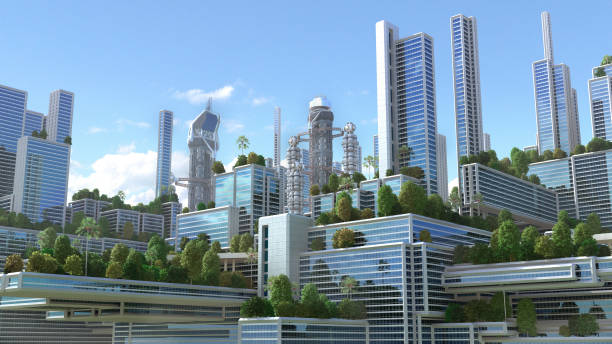News
Take a look in the first commercial European green steel
H2 Green Steel, a start-up company that emerged as a spin-off from Sweden's Northvolt, is on track to build Europe's first commercial green steel plant in Boden, Sweden. The plant will use hydrogen technology instead of blast furnaces to reduce greenhouse gas emissions by up to 95%. The steel produced can be used in cars, ships, buildings, and bridges. The hydrogen used in the plant is generated by passing water from a nearby river through an electrolyser, and the plant's energy requirements will be met by local fossil-free sources. The UK lags behind in green steel production due to high energy prices and the social consequences of transitioning to green steel. In contrast, the arrival of H2 Green Steel is viewed as an opportunity for job creation in Boden, a town that has struggled with unemployment for decades.
Advertisement

Europe’s first commercial green steel may soon be produced in a small military town in Sweden’s frozen north. A new steel plant outside Boden is set to use hydrogen technology to significantly reduce emissions compared to traditional steel production, which accounts for 7% of the world’s greenhouse gas emissions. The new plant is expected to cut emissions by up to 95% and start producing commercial batches of green steel by 2025. Despite the harsh conditions, workers are powering through layers of mud, ice, and snow at the site, which could be a significant milestone for the steel industry’s transition to more sustainable practices.
A start-up called H2 Green Steel is on track to build Europe’s first commercial green steel plant in Boden, Sweden. The plant will use hydrogen technology instead of blast furnaces and aims to cut emissions by up to 95%. H2 Green Steel is a spin-off from Northvolt, a giant electric battery factory in Sweden that wanted to find a greener way of producing the steel needed for batteries. The plant will feature a DRI tower that uses hydrogen to react with iron ore to create iron, which can be used to make steel, with water vapor as the only by-product. If successful, the plant will produce steel that can be used to construct cars, ships, buildings, and bridges. H2Green Steel will produce all the hydrogen used at the new green steel plant, obtained by passing water from a nearby river through an electrolyser. The plant’s electricity requirements will be met by local fossil-free energy sources, such as hydropower from the nearby Lule river and wind parks in the region.

Ida-Linn Näzelius, Vice President of Environment and Society at H2 Green Steel, emphasizes the importance of having ample space and green electricity for the new green steel plant in Boden, Sweden. H2 Green Steel has signed an agreement with Iberdrola to build a solar-powered green steel plant in Spain and is exploring opportunities in Brazil. H2 Green Steel faces competition from Hybrit, a joint venture between Nordic steel company SSAB, mining firm LKAB, and energy company Vattenfall, which plans to open a similar fossil-free steel plant in northern Sweden by 2026. However, according to Katinka Lund Waagsaether of the climate think tank E3G, Sweden’s carbon-cutting efforts in steel production must be viewed in the context of global production, which stands at approximately 2,000 million tonnes per year, compared to H2 Green Steel’s goal of producing five million tonnes of green steel annually by 2030.
Several ventures, including GravitHy, Thyssenkrupp, ArcelorMittal, and the Spanish government, are investing in green steel projects in Europe, alongside H2Green Steel and Hybrit in Sweden. The EU is also finalizing a new strategy, the Carbon Border Adjustment Mechanism, to make it more expensive for European companies to import non-green steel. The next eight years are critical for the steel industry to switch to carbon-cutting production processes, but it remains uncertain whether major steel producers will follow this path. “We need to keep the pressure up,” says Katinka Lund Waagsaether, a senior policy advisor at climate think tank E3G.
According to Chris McDonald, the chief executive of the UK’s national innovation centre for steel and metals, the Materials Processing Institute, the UK is “very much a laggard” in the green steel industry due to high energy prices and the difficulty of managing the social consequences of transitioning to green steel production. However, the UK government is reportedly ready to invest £600m to help the country’s two largest steelmakers move away from coal-fired blast furnaces. In contrast, the arrival of H2 Green Steel in the small military town of Boden in Sweden is viewed as a significant opportunity for job creation in an area that has struggled with unemployment for decades. The town’s mayor, Claes Nordmark, sees it as the town’s “biggest opportunity in more than 100 years.”
Trending Topics

Rand Merchant Bank Nigeria: Learn more!
The bank operates a network of branches and ATMs and provides online and mobile banking services to its customers.
Keep Reading
Fairmoney: Learn More
Fairmoney also provides financial education and tools to help its customers manage their money more effectively.
Keep ReadingYou may also like

Review Standard Chartered Visa Platinum
Check now the advantages of owning the Standard Chartered Visa Platinum credit card! With it you accumulate points and many more!
Keep Reading
Central Bank of Nigeria: Learn More
The bank regulates and supervises the activities of commercial banks and other financial institutions in the country.
Keep Reading
